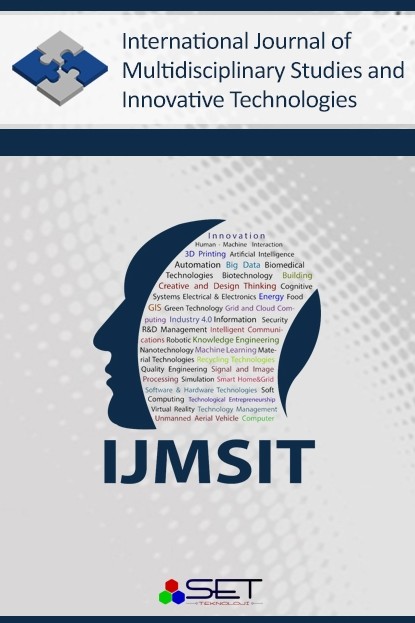
International Journal of Multidisciplinary Studies and Innovative Technologies
Yazarlar: Berna SARAÇOĞLU KAYA, Ali TUNCEL
Konular:-
Anahtar Kelimeler:Free Radical Grafting Polymerization (FRGP),High Performance Liquid Chromatograpy (HPLC),Ion Exchange Chromatography (IEC),Monodisperse and porous polymeric particles
Özet: Within the scope of the study, polymeric ligands with weak cation exchange carboxyl (-COOH) groups formed on the surface, designed for High Performance Liquid Chromatography (HPLC), monodisperse and porous poly(2,3-dihydroxypropyl methacrylate-co-ethylene dimethacrylate), poly(DHPM- co-EDM) particles were tested in Ion Exchange Chromatography (IEC) mode for chromatographic separation of protein mixtures as a weak cation exchange column-material. The synthesis of the particles obtained for the design of the column support material, which is the first step of the study carried out in three stages, takes place in four different sections. Firstly, monodisperse polystyrene microgels to form the skeletal structure were synthesized by “Dispersion Polymerization”, then monodispersed-porous poly(glycidyl methacrylate-co-ethyleneglycol dimethacrylate), poly(GMA-co-EDM) microspheres with epoxy groups were produced by using “multi-stage microsuspension polymerization”. The particles were hydrolyzed in acidic medium to form the surface in diol form and poly(2,3-dihydroxypropyl methacrylate-co-ethylene dimethacrylate), poly(DHPM-co-EDM) particles were obtained which were suitable for chromatographic use. The particles obtained in the last step were used in the “Free Radical Grafting Polymerization” (FRGP) method for the production of polymeric ligand containing carboxyl group. Poly (DHPM-co-EDM) particles with –OH groups on the surface are silanated with 3-trimethoxysilylpropyl methacrylate (TMSPM) and derivatized with methacrylic acid (MAA) to form poly(MAA) ligand on the surface of poly(DHPM-c-EDM) particles were obtained for ion-exchange chromatography. The characterization and chromatographic performance of the particles were investigated in the second and third stages of the study. For particles synthesized by the FRGP method, the average-pore size was 33 nm and the specific-surface area was 21 m2/g. Theoretical plate height values between 200-320 µm were obtained for weak cation exchange column. The peak resolution values in the chromatogram were found to be above 1.4 for separation as short as 15 minutes. Protein recovery values were found to be between 90-100% for all proteins. For the produced poly(MAA)-grafted-poly(DHPM-co-EDM) column, the BSS values of the analytes from analysis to analysis and from day to day reproducibility tests were below 1%. These results showed that synthesized column packed materials can be successfully used in ion exchange chromatography.